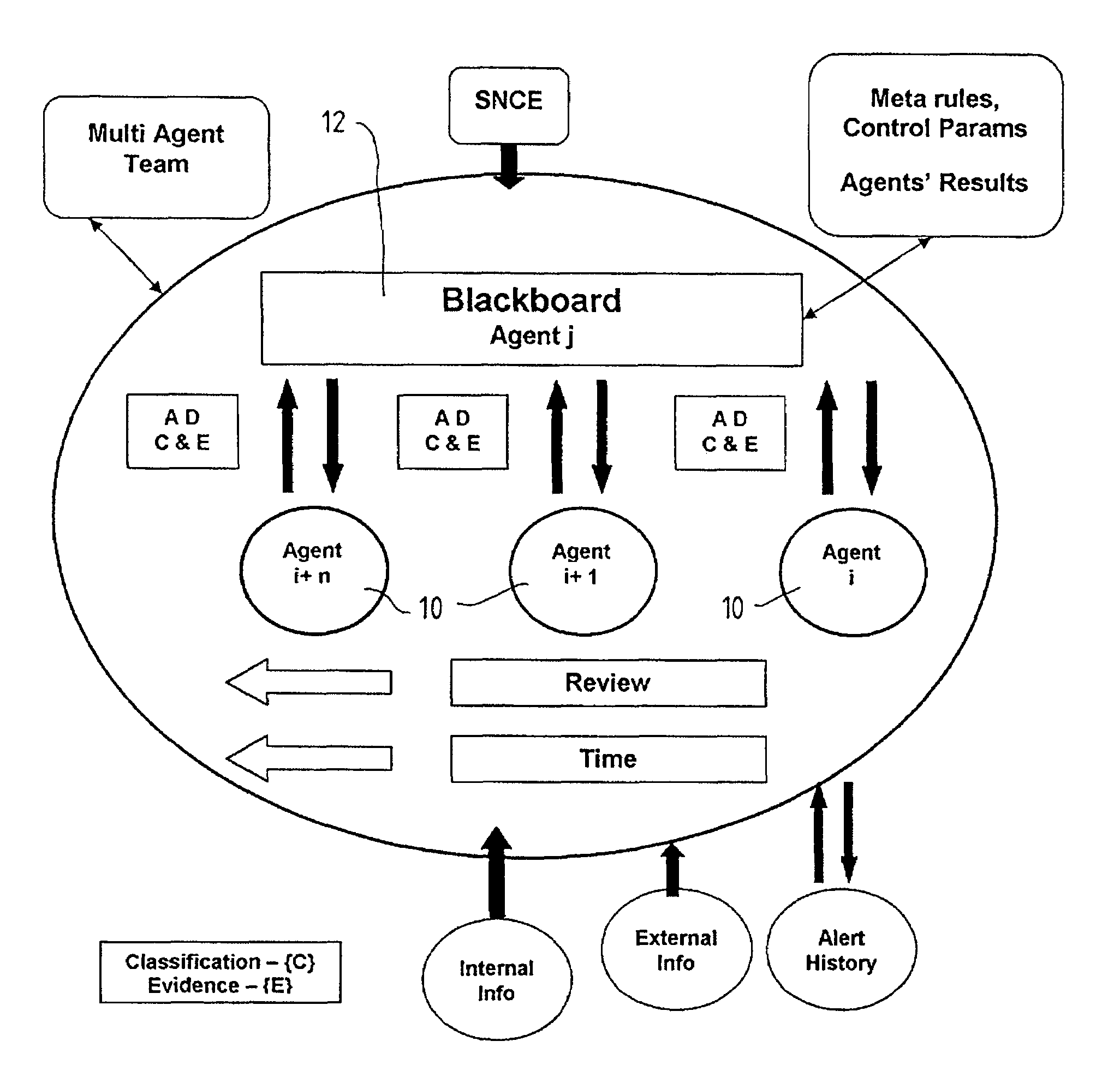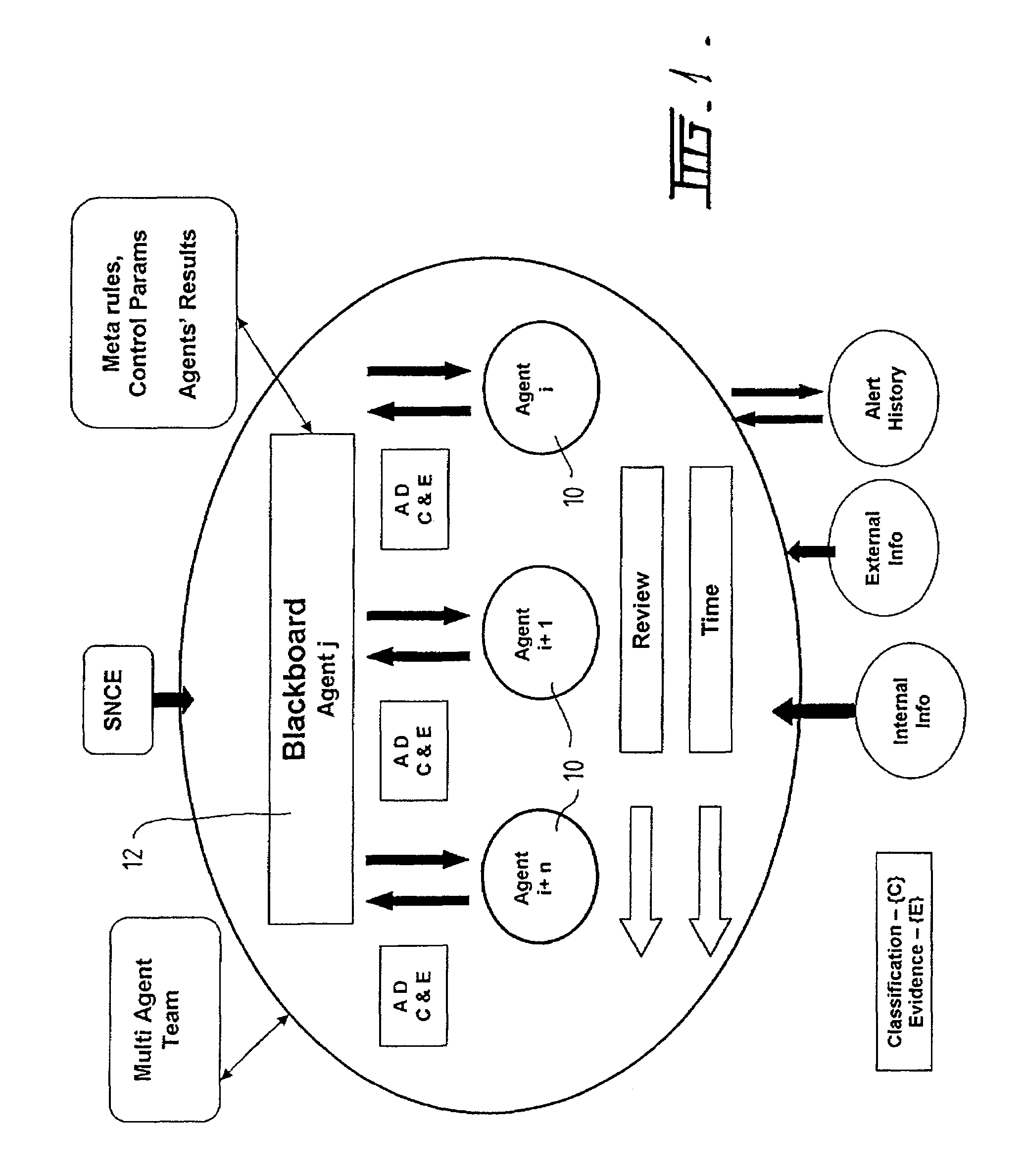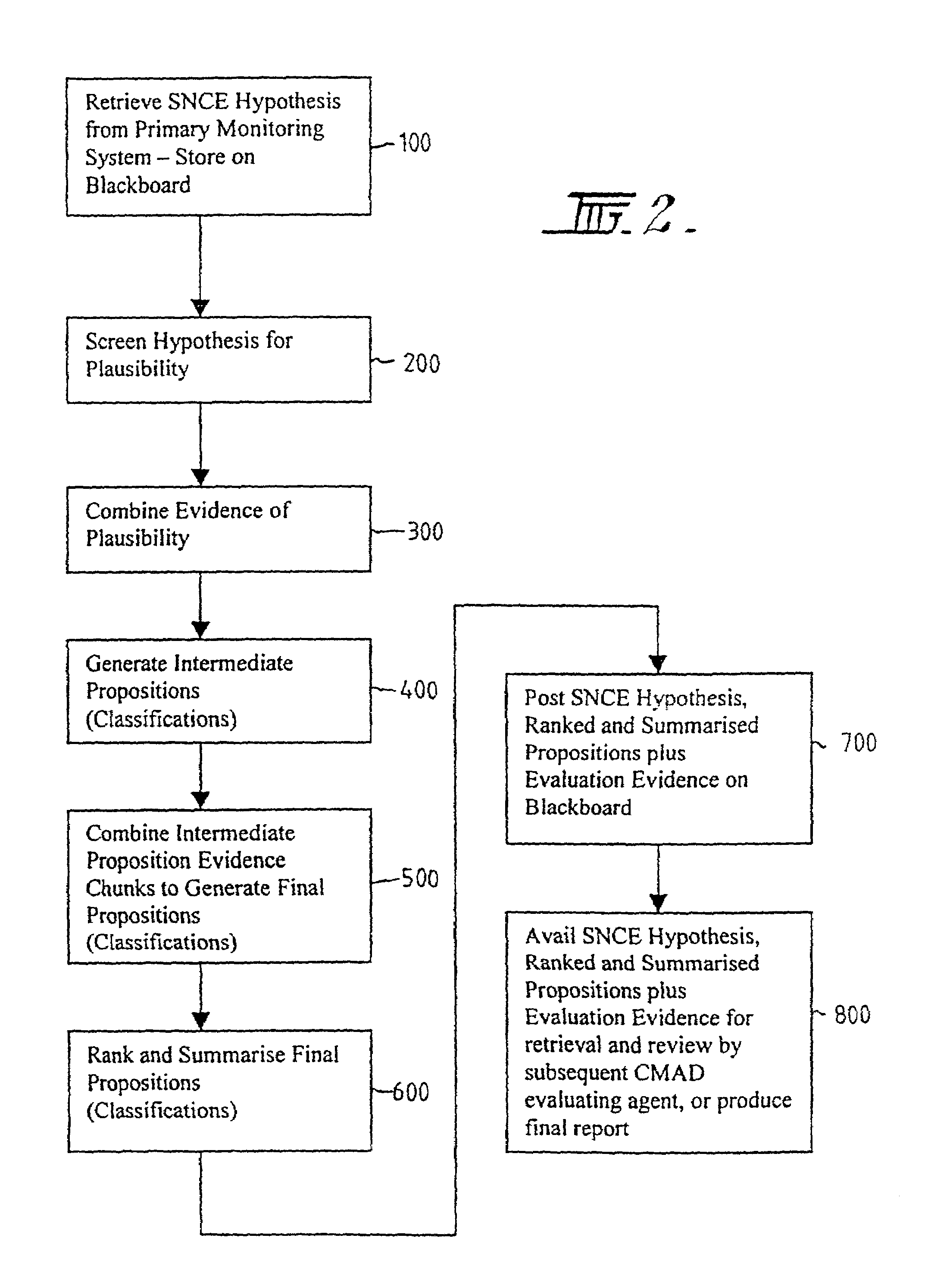Compliance monitoring for anomaly detection
a technology of compliance monitoring and anomaly detection, applied in the field of compliance monitoring for anomaly detection, can solve the problems of reducing the occurrence of true false negatives, affecting the accuracy of anomaly detection, and sometimes producing decisions much worse, so as to achieve greater accuracy and efficiency.
- Summary
- Abstract
- Description
- Claims
- Application Information
AI Technical Summary
Benefits of technology
Problems solved by technology
Method used
Image
Examples
Embodiment Construction
[0036]The CMAD system and method in accordance with the invention may be employed to support a single agent in the compliance decision making process. However, in a complex environment such as the data intensive capital market, the CMAD system and method would more typically be used to support a team of agents working on a single task over time. Each human agent has individual support that is coordinated for overall team support. This coordination is manifest as the team memory and multi-agent technology is used to facilitate both the individual and team support. FIG. 1 illustrates a conceptual model for a preferred embodiment of an intelligent decision support system (IDSS) using multi-agent technology (MAT) to support a CMADcm team review process.
[0037]In a CMADcm environment, the problem solving process is typically collaborative, as the agents share the available data, processed or not, and they are organised sequentially, and hierarchically, with each successive agent having gr...
PUM
 Login to View More
Login to View More Abstract
Description
Claims
Application Information
 Login to View More
Login to View More - R&D
- Intellectual Property
- Life Sciences
- Materials
- Tech Scout
- Unparalleled Data Quality
- Higher Quality Content
- 60% Fewer Hallucinations
Browse by: Latest US Patents, China's latest patents, Technical Efficacy Thesaurus, Application Domain, Technology Topic, Popular Technical Reports.
© 2025 PatSnap. All rights reserved.Legal|Privacy policy|Modern Slavery Act Transparency Statement|Sitemap|About US| Contact US: help@patsnap.com



